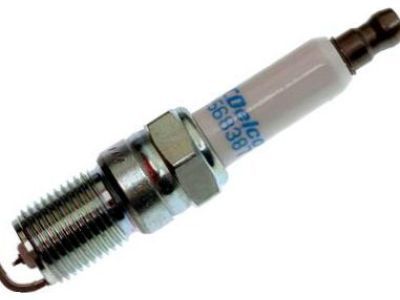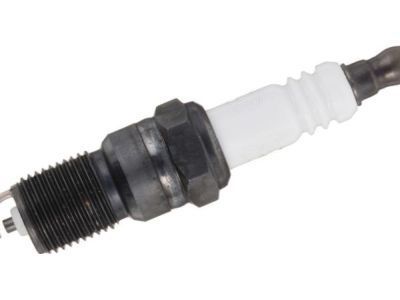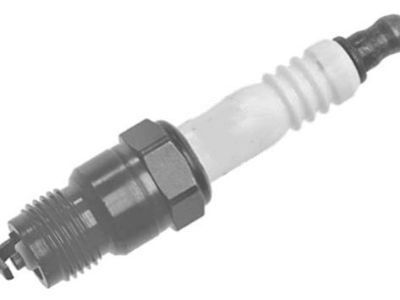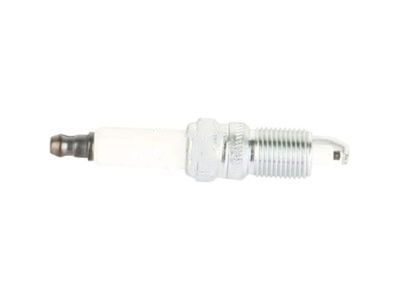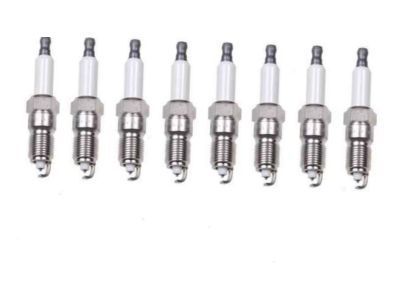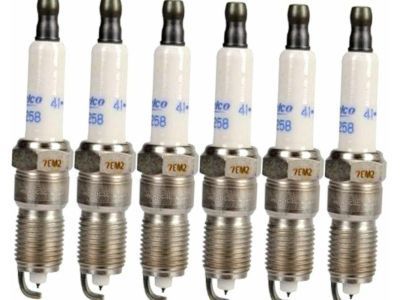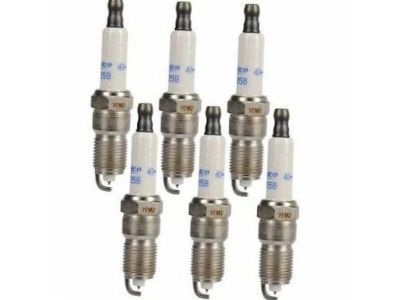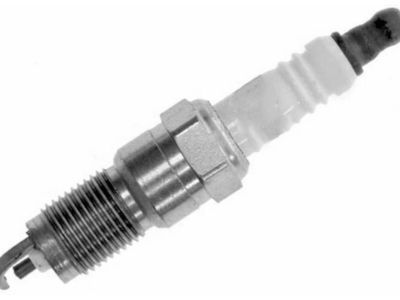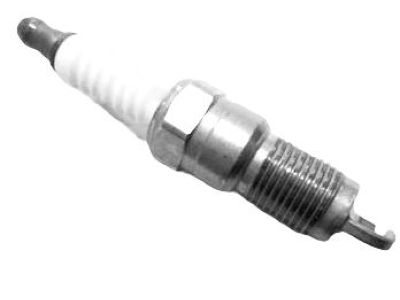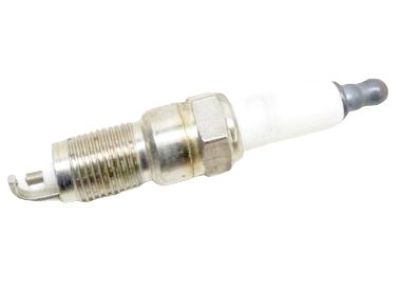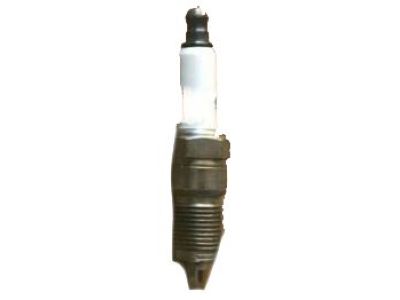
My Garage
My Account
Cart
Genuine Buick Century Spark Plug
Ignition Spark Plug- Select Vehicle by Model
- Select Vehicle by VIN
Select Vehicle by Model
orMake
Model
Year
Select Vehicle by VIN
For the most accurate results, select vehicle by your VIN (Vehicle Identification Number).
20 Spark Plugs found
Buick Century Spark Plug Assembly, Gas Eng Ign
Part Number: 12681664$9.05 MSRP: $16.46You Save: $7.41 (46%)Ships in 1-2 Business DaysBuick Century Spark Plug Asm
Part Number: 19300749$2.22 MSRP: $4.18You Save: $1.96 (47%)Ships in 1-3 Business DaysBuick Century Spark Plug Asm
Part Number: 19300382$2.22 MSRP: $4.18You Save: $1.96 (47%)Ships in 1-3 Business DaysBuick Century Spark Plug Asm
Part Number: 19301807$7.64 MSRP: $14.42You Save: $6.78 (48%)Ships in 1-3 Business DaysBuick Century Spark Plug
Part Number: 19158029$7.57 MSRP: $13.76You Save: $6.19 (45%)Ships in 1-3 Business DaysBuick Century Sparkplug Asm
Part Number: 5614281$7.64 MSRP: $14.42You Save: $6.78 (48%)Ships in 1-2 Business DaysBuick Century Spark Plug Asm,Gasoline Engine Ignition
Part Number: 19355205$2.33 MSRP: $4.18You Save: $1.85 (45%)Ships in 1-3 Business DaysBuick Century Spark Plug Asm
Part Number: 19301810$7.57 MSRP: $13.76You Save: $6.19 (45%)Ships in 1-2 Business DaysBuick Century Spark Plug Asm
Part Number: 19300875$7.57 MSRP: $13.76You Save: $6.19 (45%)Ships in 1-3 Business DaysBuick Century Spark Plug Asm
Part Number: 19301813$7.64 MSRP: $14.42You Save: $6.78 (48%)Ships in 1-3 Business DaysBuick Century Spark Plug Asm,Gasoline Engine Ignition
Part Number: 19354418$2.30 MSRP: $4.18You Save: $1.88 (45%)Ships in 1-3 Business DaysBuick Century Spark Plug
Part Number: 19158037$7.29 MSRP: $13.76You Save: $6.47 (48%)Ships in 1-3 Business DaysBuick Century Spark Plug Asm
Part Number: 19307142$6.88 MSRP: $12.98You Save: $6.10 (47%)Ships in 1-3 Business DaysBuick Century Spark Plug Asm
Part Number: 19302723$2.66 MSRP: $5.02You Save: $2.36 (48%)Ships in 1-3 Business DaysBuick Century Spark Plug Asm
Part Number: 19302728$2.22 MSRP: $4.18You Save: $1.96 (47%)Ships in 1-3 Business DaysBuick Century Spark Plug
Part Number: 5614046$2.22 MSRP: $4.18You Save: $1.96 (47%)Ships in 1-2 Business DaysBuick Century Spark Plug Pkg
Part Number: 88901022$8.31 MSRP: $15.10You Save: $6.79 (45%)Ships in 1-3 Business Days
Buick Century Spark Plug
The Spark Plug of Buick Century vehicles assists in the ignition of the fuel/air mixture inside the combustion chamber hence enabling the fire and smooth running of the cars. As a result of connecting the ignition system the spark plug provides an electric spark, which is responsible for igniting the mixture. Symptoms of bad spark plug are plasma erosion, severe black or brownish deposits, oily buildup, a gap closed by the electrode, change of color to white or gray, and pre-ignite. There are various spark plugs including the one with numerous ground electrodes or surface-discharge type to improve ignition and durability; however, gap distance and heat rating are critical to engine performance.
Each OEM Buick Century Spark Plug we offer is competitively priced and comes with the assurance of the manufacturer's warranty for the part. Furthermore, we guarantee the speedy delivery of your orders right to your doorstep. Our hassle-free return policy is also in place for your peace of mind.
Buick Century Spark Plug Parts Questions & Experts Answers
- Q: What are the components and functions of a typical spark plug on Buick Century?A:A typical spark plug comprises a metal shell encasing a ceramic insulator with a central metal electrode extending downward and a side electrode attached to the shell. The spark plug gap, measured in thousandths of an inch or hundredths of a millimeter, defines the distance between these electrodes, serving as the point where the electrical current can arc. The spark plug itself doesn't generate sparks but allows the current, ranging from 20,000 to 50,000 volts, to travel through wires to create sparks in the combustion chamber, igniting the air/fuel mixture. The spark plug's heat range, determined by the insulator's length, influences its ability to dissipate heat. Longer insulators operate hotter, while shorter ones run cooler. Selecting the correct heat range depends on driving habits, with long-distance, high-speed driving favoring colder plugs and stop-and-go driving favoring hotter ones. Replacement is typically needed every 20,000-30,000 miles, as wider plug gaps demand more voltage and affect engine efficiency. During removal and installation, care must be taken to avoid wire mix-up, and plugs should be tightened with proper torque specifications to prevent issues. Inspection, cleaning, and gap adjustment are essential maintenance steps to ensure efficient spark plug performance.
Related Buick Century Parts
Browse by Year
2005 Spark Plug 2004 Spark Plug 2003 Spark Plug 2002 Spark Plug 2001 Spark Plug 2000 Spark Plug 1999 Spark Plug 1998 Spark Plug 1997 Spark Plug 1996 Spark Plug 1995 Spark Plug 1994 Spark Plug 1993 Spark Plug 1992 Spark Plug 1991 Spark Plug 1990 Spark Plug 1989 Spark Plug 1988 Spark Plug 1987 Spark Plug 1986 Spark Plug 1985 Spark Plug 1984 Spark Plug 1983 Spark Plug 1982 Spark Plug
